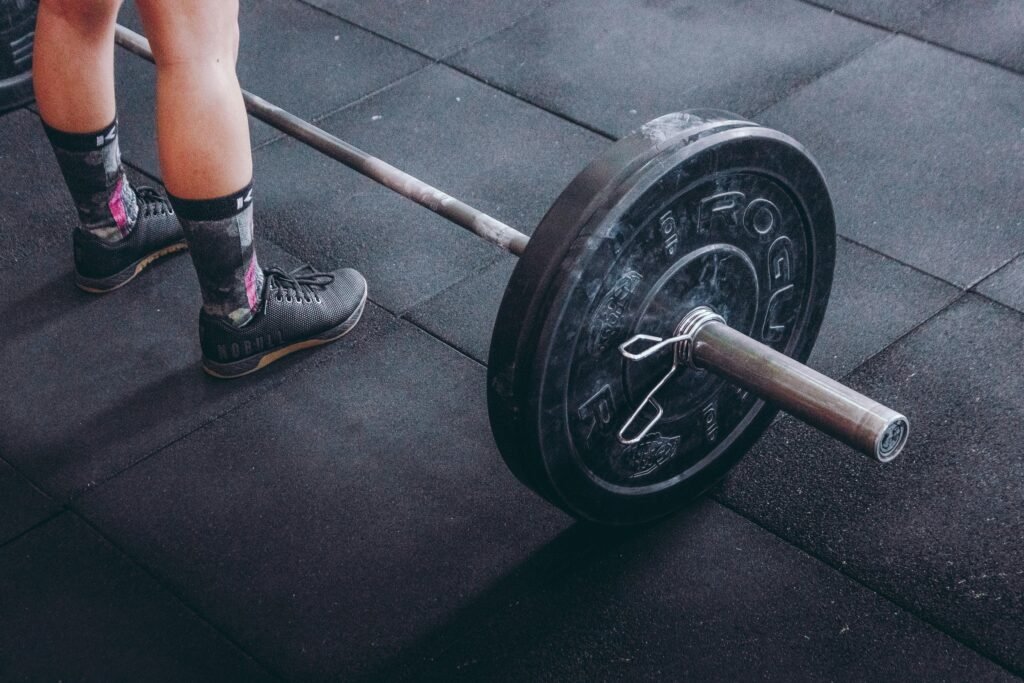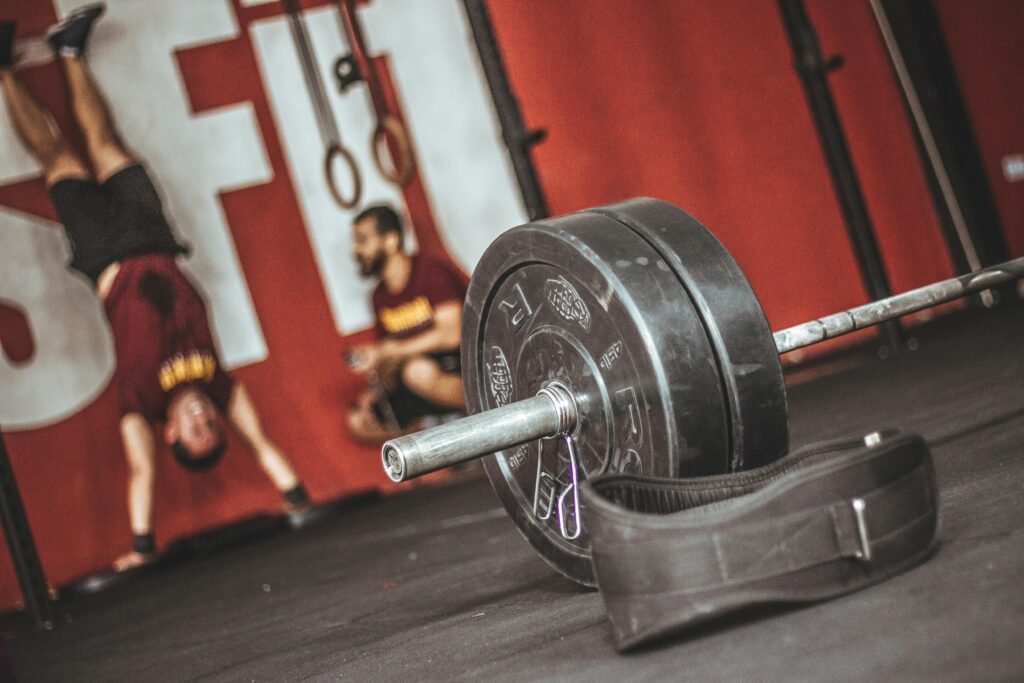When I first stepped into the gym as a novice, the world of resistance training felt overwhelming. Weights, machines, and countless exercises filled the space, each promising to sculpt my body into a healthier version of myself. But with the right guidance, resistance training became not just a routine, but a transformative journey. In this post, we’ll dive into the essentials you need to kickstart your resistance training journey, paving the way for a stronger, healthier you.
Understanding Resistance Training: The Basics
Resistance training is a method of exercise where you use force to build muscle strength. The primary goal is to enhance physical capacity through weight lifting or bodyweight exercises. By pushing against resistance, whether that’s from weights, machines, or your own body, you stimulate muscle fibers. This process sparks growth and increases your overall strength and endurance.
Definition and Principles of Resistance Training
So, what exactly is resistance training? It involves performing exercises that target specific muscle groups. It’s not just about lifting heavy weights; it’s about challenging your body to adapt. The basic principle is simple: when you exert your muscles against a force, they adapt by getting stronger. This principle is foundational for anyone looking to enhance their fitness journey.
Types of Resistance Training: Free Weights vs. Machines
When starting out in resistance training, you have options: free weights or machines. Both serve a purpose but have unique benefits.
- Free Weights: These include dumbbells and barbells. Using free weights engages more stabilizing muscles. This can lead to better balance and functional strength.
- Machines: Machines can be safer, especially for beginners. They guide your movements and can help prevent injuries.
Choosing between the two can depend on personal preference. Do you feel more comfortable with guided movements or prefer the freedom of free weights? Each has its advantages, so you might want to try both!
Benefits for Beginners
Why should you incorporate resistance training into your routine? Here are a few key benefits:
- Increased Strength: You’ll feel stronger and more capable in daily activities.
- Enhanced Endurance: Your stamina improves, making everything from climbing stairs to carrying groceries easier.
- Overall Health: Resistance training can help boost your metabolism and support bone density.
Common Myths About Resistance Training Dispelling
There are many misconceptions surrounding resistance training. Let’s break a few down:
- Myth: *Lifting weights will make women bulky.*
Fact: Women typically lack the testosterone levels needed for significant muscle bulk. - Myth: *Only advanced athletes need to lift weights.*
Fact: Everyone, regardless of fitness level, can benefit from resistance training.
“Strength does not come from physical capacity. It comes from an indomitable will.” – Mahatma Gandhi
The mythbusters are just part of the journey. Understanding these principles can empower your workout routine. Remember, resistance training isn’t solely for bodybuilders; it’s for anyone willing to enhance their health and fitness.
Choosing Your Equipment: Free Weights vs. Machines

Selecting the right equipment is a significant step in your fitness journey. It can make or break your experience, especially if you’re just starting out. So, should you choose free weights or machines? Let’s explore both options in detail.
Pros and Cons of Using Free Weights
Free weights, like dumbbells and barbells, are incredibly versatile. Here are some pros:
- Increases Functional Strength: Free weights involve multiple muscles working together, simulating real-life movements.
- Flexibility: You can perform a variety of exercises with just a few pieces of equipment.
- Engagement: They require more stabilization, activating core muscles, which is great for overall strength.
However, there are cons as well:
- Learning Curve: Beginners may struggle to maintain correct form, which increases injury risk.
- Requires Space: Free weights need adequate space for safe usage.
Benefits of Resistance Machines for Beginners
Resistance machines can be quite beneficial, especially for newcomers. First, they have a defined path of movement. This means that you can focus more on your technique without the added challenge of balancing weights. More benefits include:
- Guidance: Machines often have diagrams and instructions that make it easy to know how to use them.
- Reduced Injury Risk: They support your body and help maintain proper form, ideal for beginners.
How to Choose the Right Equipment Based on Fitness Goals
Your fitness goals dictate the right equipment for you. For strength training, both free weights and machines can be effective. If you’re aiming to build muscle, you’ll want to incorporate both into your routine. Ask yourself: Are you focusing on building strength, improving cardio, or toning up?
For weight loss and toning, machines can provide a controlled environment. Choose a few key exercises, like lat pulldowns or leg presses, and mix them with bodyweight exercises. It’s about balance!
Tips for Proper Form and Safety Precautions
Focusing on form is critical. It prevents injuries and maximizes benefits. Here are some quick tips to ensure you’re using the right form:
- Start Slow: Regardless of the equipment, don’t rush through your sets.
- Ask for Help: If you’re unsure how to use a machine or free weight, don’t hesitate to ask a trainer.
Remember, “
The gym is not just a place to work out; it’s a sanctuary for self-improvement.
” – Unknown. Let’s make the most of your time there!
Creating Your First Resistance Training Workout Plan
Starting your journey into resistance training can feel overwhelming. But it doesn’t have to be! With the right plan, anyone can incorporate effective workouts into their routine. Let’s break it down.
Sample Workout Plans for Different Fitness Levels
When creating a resistance training workout plan, you need to consider your current fitness level. Start where you are. Here are some sample plans:
- Beginner: Focus on bodyweight exercises. Aim for 2-3 days a week. Include squats, push-ups, and planks.
- Intermediate: Incorporate dumbbells or resistance bands. Work out 3-4 days a week. Add lunges, overhead presses, and bent-over rows.
- Advanced: Introduce heavier weights and complex movements. Train 4-5 days a week. Include deadlifts, bench presses, and pull-ups.
How to Structure Your Workouts
So, how do you structure these workouts? It’s easier than you think! Here’s a quick guide:
- Sets: Perform 2-4 sets of each exercise.
- Reps: Aim for 8-12 reps per set for strength building.
- Rest Periods: Take 30 seconds to 1 minute between sets to recover.
Incorporating Both Upper and Lower Body Exercises
Don’t forget to target both the upper and lower body! This creates a balanced workout. A well-rounded routine promotes overall strength.
Consider pairing exercises. For instance, do a set of squats followed by push-ups. This method lets one muscle group rest while you work another.
Importance of Progression and Variation in Workouts
Progression is key. As you get stronger, your workouts need to evolve to avoid plateaus. This could mean increasing weights or trying new exercises. Variation keeps things fresh and prevents boredom.
Ask yourself, are you challenging your body enough? Embrace changes in your routine. They lead to the best results!
“The secret of getting ahead is getting started.” – Mark Twain
| Fitness Level | Sample Exercises | Frequency |
|---|---|---|
| Beginner | Bodyweight squats, push-ups, planks | 2-3 times a week |
| Intermediate | Dumbbell lunges, overhead presses, bent-over rows | 3-4 times a week |
| Advanced | Deadlifts, bench presses, pull-ups | 4-5 times a week |
Crafting a manageable workout plan that beginners can realistically follow is essential to seeing results over time. Adjustments might be necessary based on individual fitness levels, so stay flexible.
The Role of Nutrition in Resistance Training
When it comes to resistance training, nutrition plays a pivotal role. Without proper fuel, our workouts and recovery suffer. Each meal and snack can either propel us forward or let us down. So, what should we focus on? Let’s break down the essentials.
Understanding Macronutrients
First, we need to understand macronutrients: protein, carbs, and fats. These are crucial for energy and recovery.
- Protein: Essential for muscle repair and growth. Aim for lean sources like chicken, fish, legumes, and dairy.
- Carbohydrates: Our main energy source. They sustain us during workouts. Whole grains, fruits, and vegetables are excellent options.
- Fats: Necessary for hormone production and nutrient absorption. Include healthy fats like avocados and nuts.
Have you ever noticed how sometimes you feel exhausted after a workout? This could be a sign of inadequate carb intake. By balancing these macronutrients, we can enhance performance.
Pre and Post-Workout Nutrition Tips
What we eat before and after we lift weights matters immensely.
- Pre-Workout: Aim for a light meal with protein and carbs about 30 minutes to an hour before hitting the gym.
- Post-Workout: Try to consume protein and carbs within 30 minutes after exercising. This window is crucial for muscle recovery.
If you’re wondering about snacks, a banana with nut butter or a protein shake can work wonders. I’ve seen many beginners overlook this step, which could be a mistake.
Hydration: The Unsung Hero
And let’s not forget hydration. Water is essential yet often ignored. It helps with digestion, nutrient absorption, and recovery. Dehydration can lead to fatigue, cramping, and reduced performance.
Common Dietary Myths
I often encounter misconceptions among fitness novices. Here are a few major myths:
- Myth 1: Carbs make you gain weight. – In reality, carbs are vital for energy.
- Myth 2: All fats are bad. – Healthy fats can actually help you feel full and satisfied.
- Myth 3: Protein supplements are the only way to gain muscle. – Whole food sources of protein are just as effective.
As
“Good nutrition creates health in all areas of our existence. All parts are interconnected.” – Juliette B. de Bairacli Levy
states, all parts of our diet work together. So let’s nourish our bodies wisely.
Frequently Asked Questions about Resistance Training
Resistance training can feel overwhelming for beginners. This blog addresses key questions many newcomers ask. We will explore common misconceptions and clarify your concerns. After all, understanding the basics can ease your journey.
1. What should beginners focus on when starting?
As a beginner, it’s essential to start simple. Focus on learning proper techniques and form. This will help prevent injuries. Think of it like learning to ride a bike. Balance and control come first before speed.
Here are some key areas to prioritize:
- Technique: Master the basics, like squats and deadlifts, before adding weight.
- Consistency: Try to create a routine. It’s better to train regularly than to push too hard too soon.
- Rest: Your muscles need time to recover. Don’t skip rest days!
2. How often should I train each week?
How often you train can vary, but aiming for about three to four sessions per week is a good start. Each session should ideally last around 30-60 minutes. Think of it like watering a plant. A little each day can lead to growth!
3. What are the signs of overtraining?
Overtraining is a risk if you’re not careful. You may notice symptoms like:
- Constant fatigue that doesn’t improve with rest.
- Increased irritability or mood swings.
- Persistent muscle soreness or joint pain.
If you experience these signs, take a break. Your body is telling you it needs rest.
4. Is it necessary to follow a strict diet?
While a healthy diet is beneficial, it doesn’t have to be strict. Focus on balanced meals that include:
- Protein: Essential for muscle building.
- Carbohydrates: Fuels your workouts.
- Fruits and Vegetables: For vitamins and minerals.
Remember, it’s also about enjoying food. A strict diet can lead to burnout.
5. Can resistance training help with weight loss?
Absolutely! Resistance training is effective for weight loss. It boosts your metabolism and helps build muscle. More muscle means your body burns more calories at rest.
In essence, resistance training is a powerful tool. It can help you lose weight while strengthening your body.
“Those who do not find time for exercise will have to find time for illness.” – Edward Smith
As we conclude, I hope these answers guide you in your resistance training journey. Remember, every expert was once a beginner. Take it one day at a time, and most importantly, stay positive!
TL;DR: This article offers a detailed overview of resistance training for beginners, highlighting techniques, benefits, and tips to successfully start your journey.


